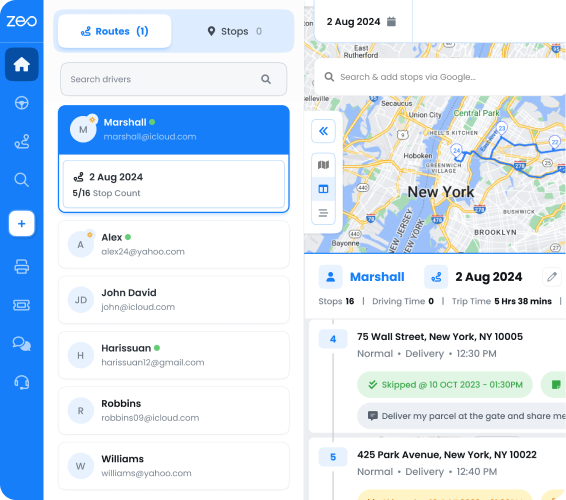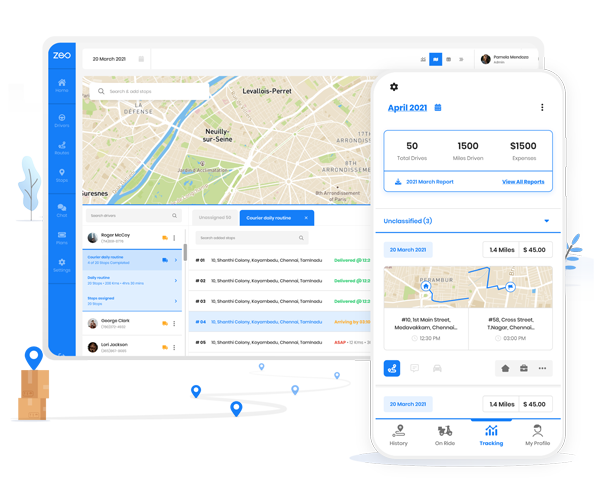Amazon ships millions of orders in a year!
It’s a feat to manage and is only possible through comprehensive logistics systems and processes.
In this blog, we’ll understand the fulfilment network created by Amazon, how Amazon is managing deliveries with Amazon Logistics, and how any business can provide fast deliveries to its customers without relying on Amazon.
Let’s get started!
Amazon’s Fulfillment Network
Amazon’s fulfillment network consists of buildings of different sizes which serve different purposes for processing orders.
- Sortable Fulfillment Centers: These fulfillment centers are for picking, packing, and shipping smaller items like toys, housewares, books, etc. About 1500 people can be employed in each center. Robots, which are an innovation of Amazon Robotics, are also used to bring higher efficiency to operations.
- Non-sortable Fulfillment Centers: These fulfillment centers can employ more than 1000 people. These centers are for picking, packing, and shipping heavy-weight or large-sized customer items like furniture, rugs, etc.
- Sortation Centers: These centers serve the purpose of sorting and consolidating customer orders by final destination. The orders are then loaded onto the trucks for delivery. Sortation centers enable Amazon to provide everyday delivery, including Sundays.
- Receive Centers: These centers take in large orders of types of inventory that are expected to be sold quickly. This inventory is then allocated to different fulfillment centers.
- Prime Now Hubs: These hubs are smaller warehouses meant to fulfill same-day, 1-day, and 2-day deliveries. The software system of scanners and barcodes enables the employees to quickly find the location of the items and pick them up.
- Amazon Fresh: These are physical and online grocery stores with everyday items. It offers same-day deliveries and pickup in select locations.
What is Amazon Logistics?
Amazon delivers products to its customers through its own delivery service called Amazon Logistics. Amazon ties up with third-party contractors and calls them Delivery Service Partner (DSP). These DSPs are aspiring entrepreneurs who treat it as a business opportunity and become partners of Amazon.
The DSP owners manage the employees and the delivery vehicles. They are involved in day-to-day delivery operations. Every morning the DSP reviews and assigns the route to delivery drivers. The drivers also get the devices to be used for making deliveries. The DSP monitors the progress of the deliveries throughout the day and is available to help resolve any issues.
To manage day-to-day operations and to make faster deliveries Amazon provides them with routing and scheduling technology and hand-held devices. Amazon also provides on-road support.
Amazon logistics makes deliveries on all days of the week from 8 am to 8 pm. If a package has ‘AMZL_US’ mentioned on it, that means the delivery is being made by Amazon Logistics.
To keep the customers updated about the progress of the delivery, Amazon offers a tracking link to the customers. The customer can track the arrival and departure of their order from various facilities. They can also sign up for text or email notifications from Amazon regarding their shipment status.
Amazon Logistics for Third-party Sellers
As a seller listed on Amazon, if you are relying on delivery to be made by Amazon then you need to be a bit wary. As there are many different DSPs, the quality of service can differ from one DSP to another. You will not have any control over the delivery experience your customer is receiving. It can result in negative feedback for your brand.

increase fuel savings
Save $200 on fuel, Monthly!
Optimize routes with our algorithm, reducing travel time and costs efficiently.
Get Started for Free
To mitigate this, you must be proactive in seeking feedback from the customers. You can request feedback as soon as the package is delivered to the customer. Share your contact information with the customer so that they can reach out to you in case of any issues.
How can you compete with Amazon Logistics?
If you are fulfilling your Amazon orders yourself or if you are not listed on Amazon but want to offer fast delivery to your customers – use route optimization!
Route optimization software helps the fleet manager plan and optimize the routes for maximum efficiency. It only takes a few seconds to plan the route. You can even plan the routes in advance.
It takes into account driver availability, stop priority, stop duration, delivery time window, and vehicle capacity while optimizing the route. When your drivers follow efficient routes, they are able to make more deliveries in a day. The fleet managers can track the live location of the delivery vehicles and take necessary actions if needed.
Route optimization also helps in enhancing customer experience as a tracking link can be shared with the customer to keep them in the loop. Also, nothing makes a customer happier than a quick delivery!
Hop on a quick 30-minute demo call with Zeo Route Planner to start optimizing your routes asap!
Read more: The Role of Route Optimization in E-Commerce Delivery
Conclusion
There’s a lot to learn from Amazon in terms of managing its operations. It has built a solid network of fulfillment centers and leveraged the power of Amazon Logistics to manage a huge volume of orders. However, a business of any scale can run smooth delivery operations with the help of route optimization and provide an excellent customer experience!

Are you a fleet owner?
Want to manage your drivers and deliveries easily?
Grow your business effortlessly with Zeo Routes Planner – optimize routes and manage multiple drivers with ease.

increase fuel savings
Save 2 Hours on Deliveries, Everyday!
Optimize routes with our algorithm, reducing travel time and costs efficiently.
Get Started for Free




















